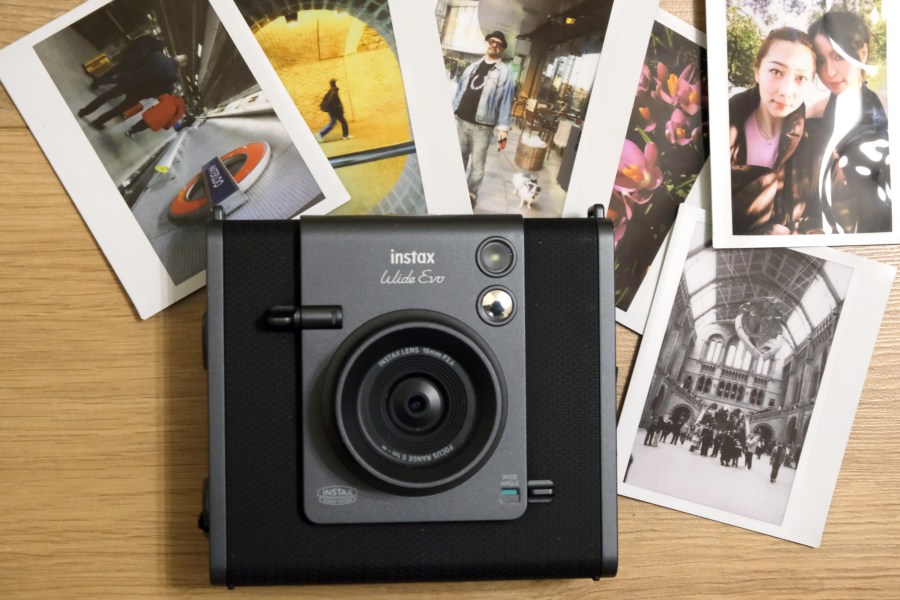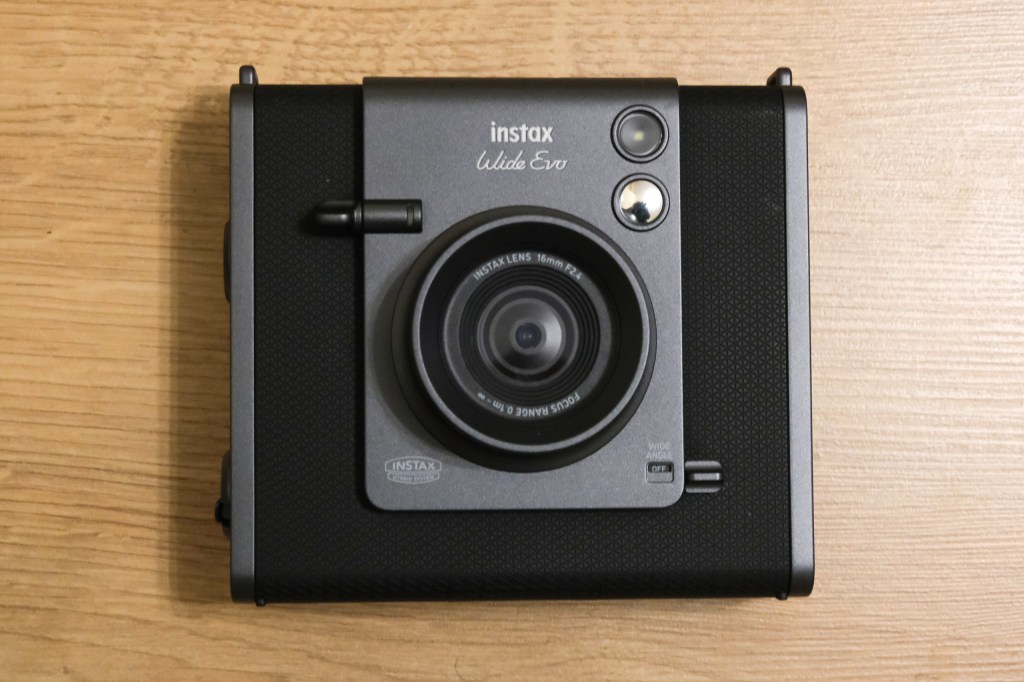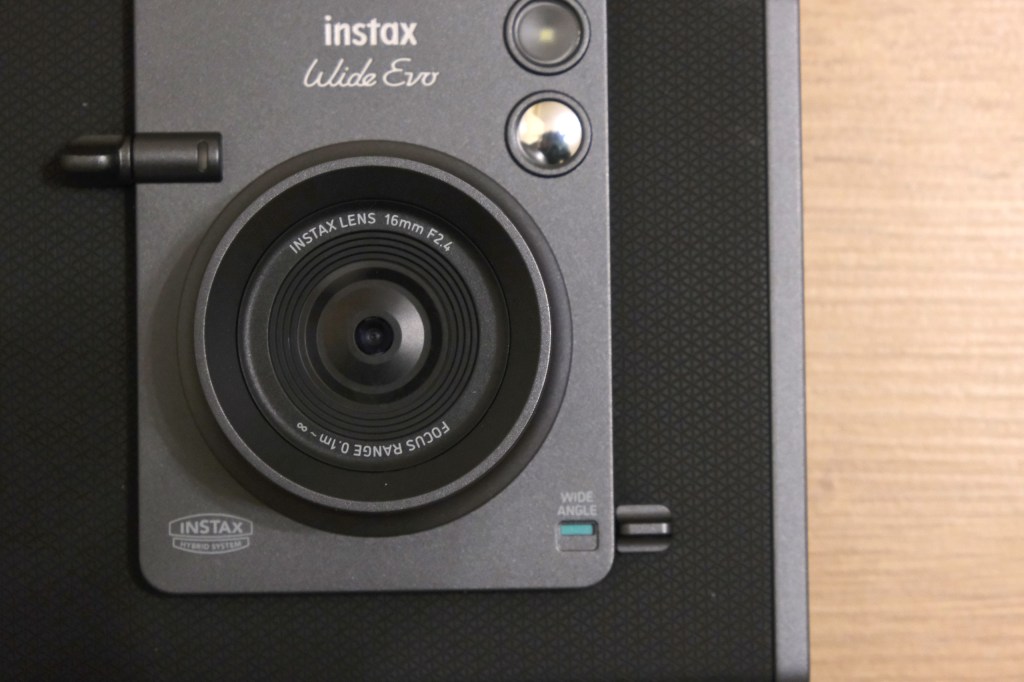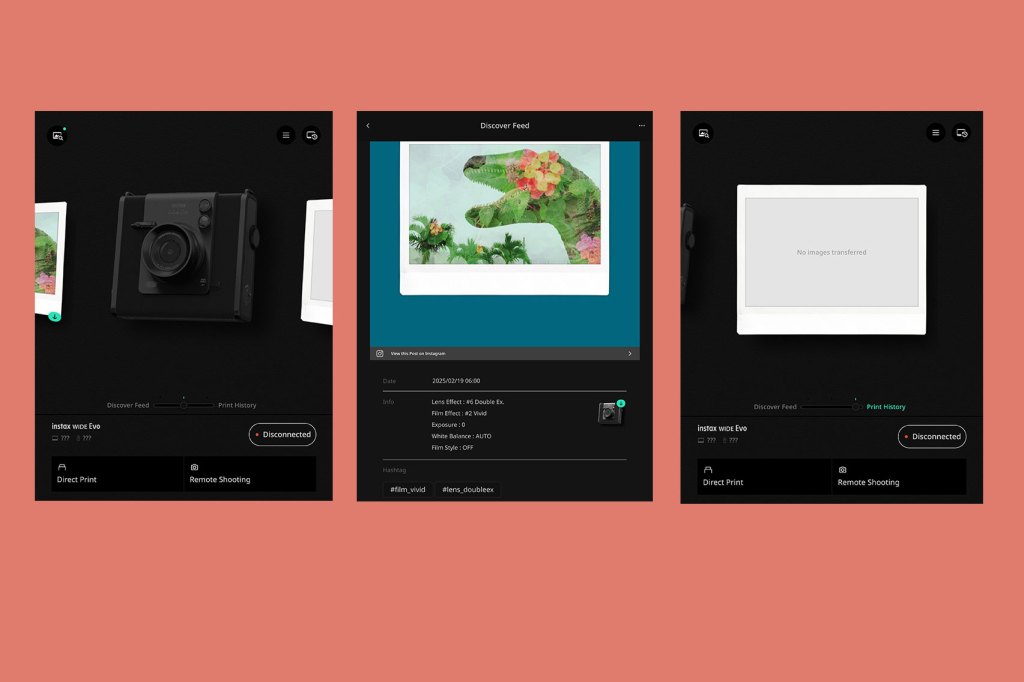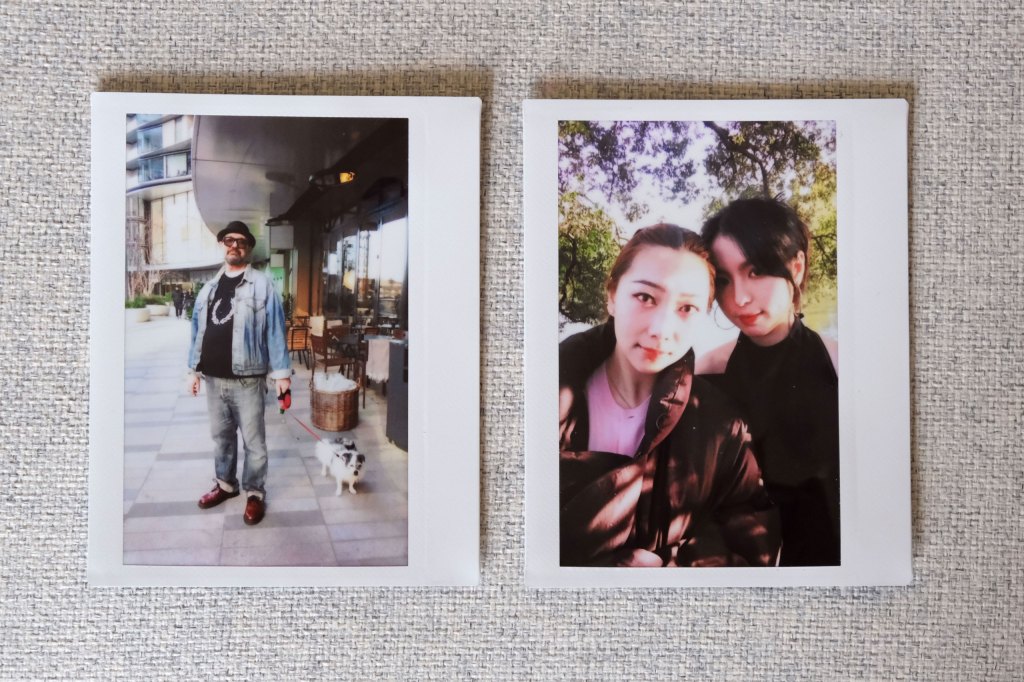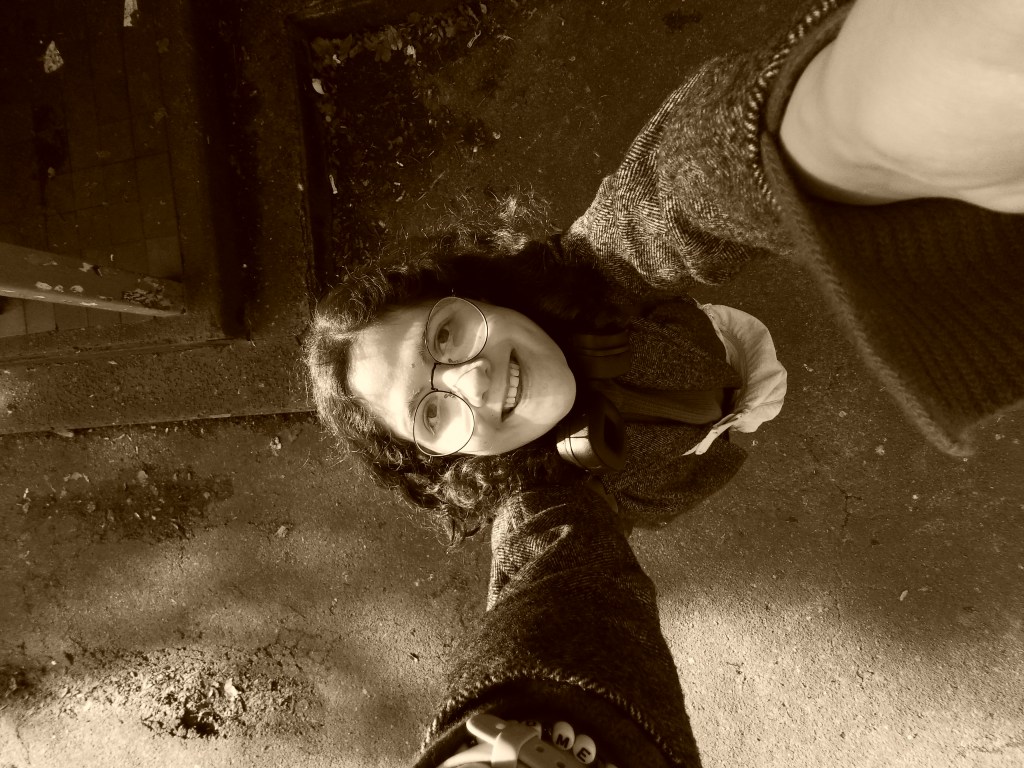Amateur Photographer verdict
The Instax Wide Evo is an upgraded but more high-end Mini Evo. But does it fulfill its promise? Yes and no.- You choose what you print
- Bluetooth connection and smartphone app
- Quality prints that are larger in size
- Classier design
- Slow to turn on and focus
- Effects may not be for everyone
- Pricey
- Less wide, but still not small-bag friendly
Five years after the Mini Evo was released another Evo, a wider Evo, joins it. As a hybrid instant camera, it essentially works much like the Mini Evo. The difference? A higher price tag, bigger print size and more control of the camera’s settings.
Fujifilm Instax Mini Evo at a glance
- 1/3-inch sensor
- Retro-styled body
- Takes digital images, with option to print them on Instax Wide film
- Price $349.95/£319.99
- Instax.com
Camera body and design
While it’s got tons in common with the Instax Mini Evo, the main difference is who it’s meant for. The Wide Evo, dubbed ‘the photographer’s camera’ by Fujifilm, is designed to appeal to more serious photographers who have a certain amount of cash to spend. This is notably the most expensive Instax camera being sold by Fujifilm. And it looks the part.
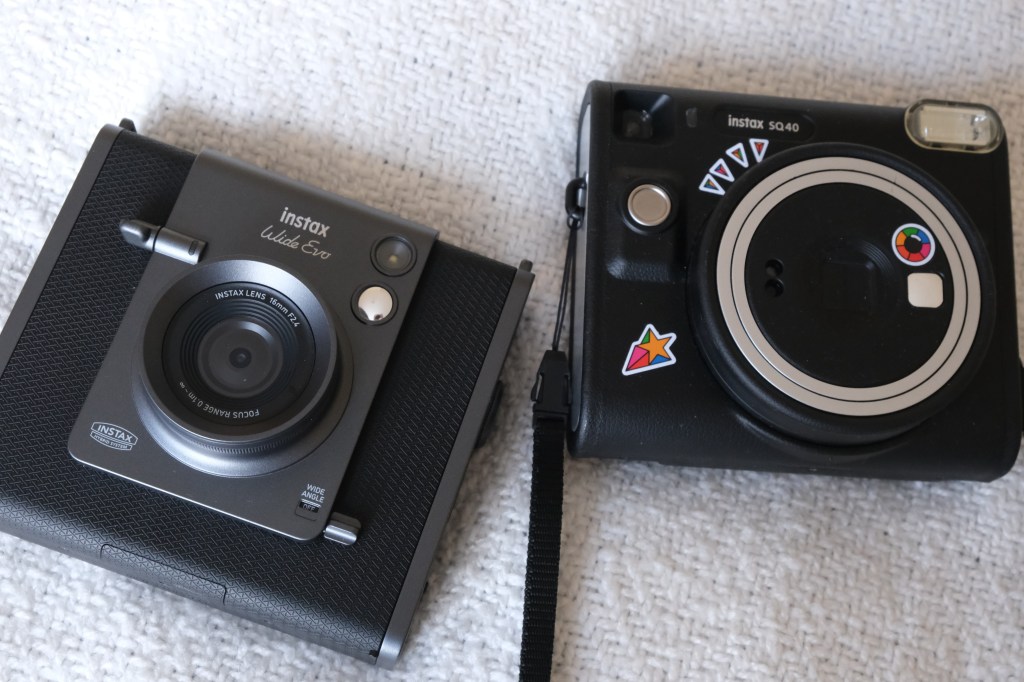
The Instax Wide Evo’s look appears to take inspiration from the Instax SQ40 and Instax Mini 99. It comes in one colour – Grey with black accents. Just by looking at it, you might assume the Wide Evo is less wide than other wide cameras, and it is, just not significantly smaller than the Instax Wide 400 for example. As such, it’s a better idea to wear it around your neck or on your shoulder than to try to stuff it inside a Uniqlo crossbody bag like I did with the Mini Evo.
Its design is similarly elegant and retro, especially with its classic film camera- inspired wind-on lever that when turned, begins to print out your images. The camera shares a lot of its physical dials and buttons with the Mini Evo. There’s two dials on either side of the camera for switching and combining its lens and film effects.
There is a degree control dial on the lens with you can twist to play around with selected effects. There’s a film style button on top of the camera and these include effects such as cinematic, date stamp and film strip.
At the front of the camera is a switch for turning on the Wide angle mode (which switches over to a 16mm full-frame equivalent) as well as the shutter lever, in-built flash and a tiny selfie mirror.


Beside the On and Off switch on the side of the camera are the Wide Evo’s USB-C type port and microSD card slot. The camera features a 3.5-inch LCD screen with a 460k-dot pixel count like the Mini Evo on the rear. Lastly, at the bottom is a threaded hole for those looking to mount the camera on a tripod for landscape and portrait photography.
The shooting experience
The Wide Evo doesn’t just look like a premium camera, it also feels like one too. It’s got the capabilities to match – more so than the Instax Mini 12 and SQ40, for example, which feature simplified features and camera controls.
While it’s a clear step-up from the Mini Evo, it’s still fairly easy to use. The Mini Evo has a 28mm wide-angle lens with a bright f/2.0 aperture. This is the widest angle lens on an Instax camera to date. This camera did reasonably well in most situations, with images coming out vibrant (even when the vibrant effect isn’t selected) and detailed.
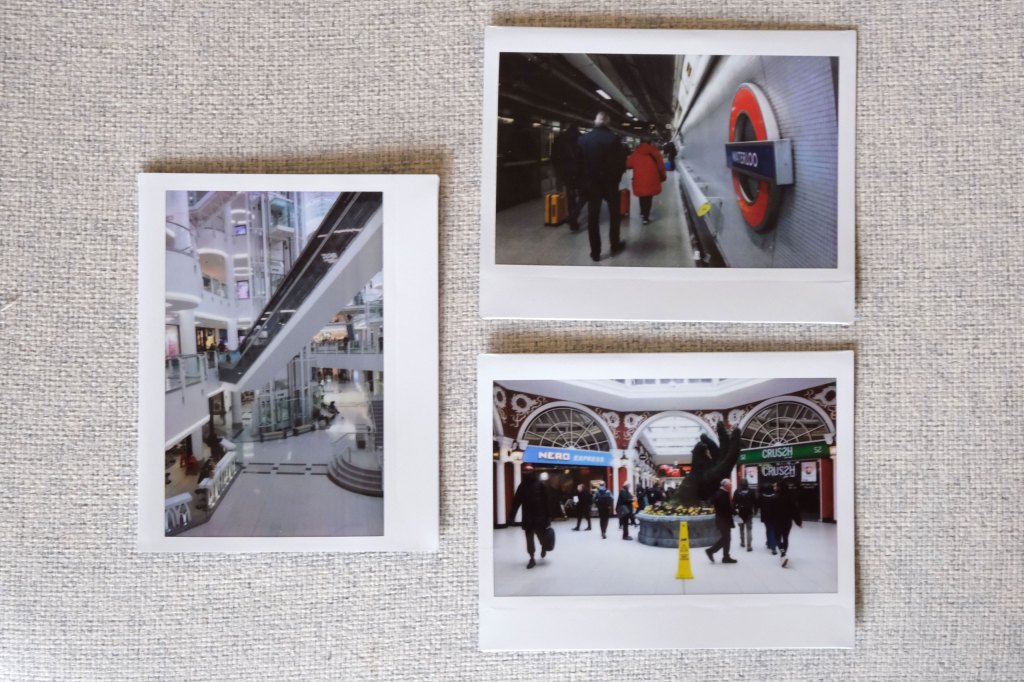
Using the ‘+’ button under the screen at the back, you can zoom in and out when taking photos. It was surprisingly detailed, even when I pushed the zoom to the limit. In one photo, you can easily distinguish a faraway plane in the sky. The Wide Evo’s Macro mode is truly excellent and I was very happy with my prints. It seems Fujifilm was finally got it right since the release of the Instax Mini 99.
In terms of quality, it’s not bad. For the wide film format, it’s fitting. However, it is worse than many newer budget smartphones and as a photographer I don’t find any use for the digital files because of this. The Auto Exposure is at times, a little off. There is some lens flare in back-lit scenes and some overexposure in photos I took when the UK was, for a moment, graced with the presence of the sun.
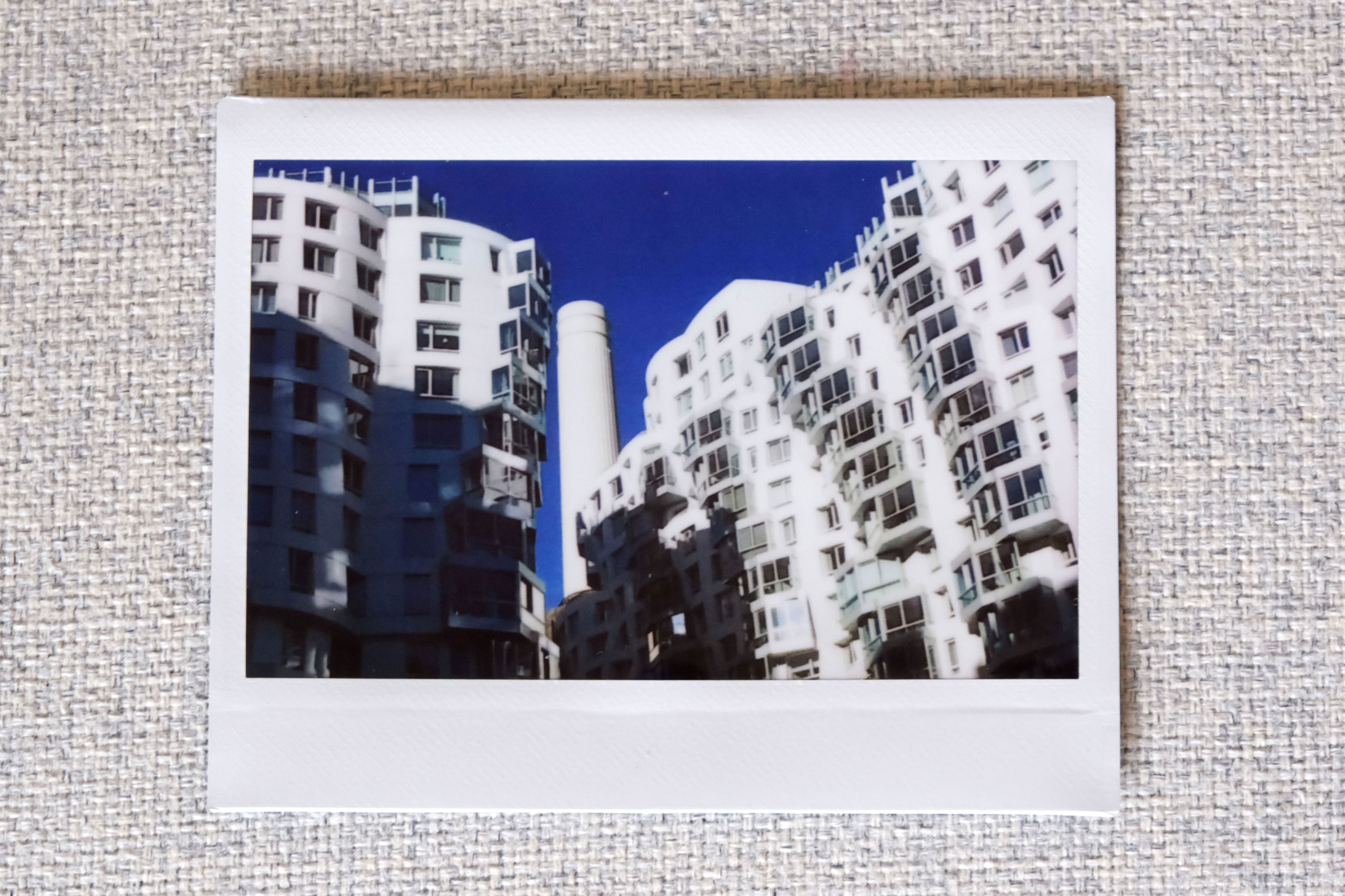
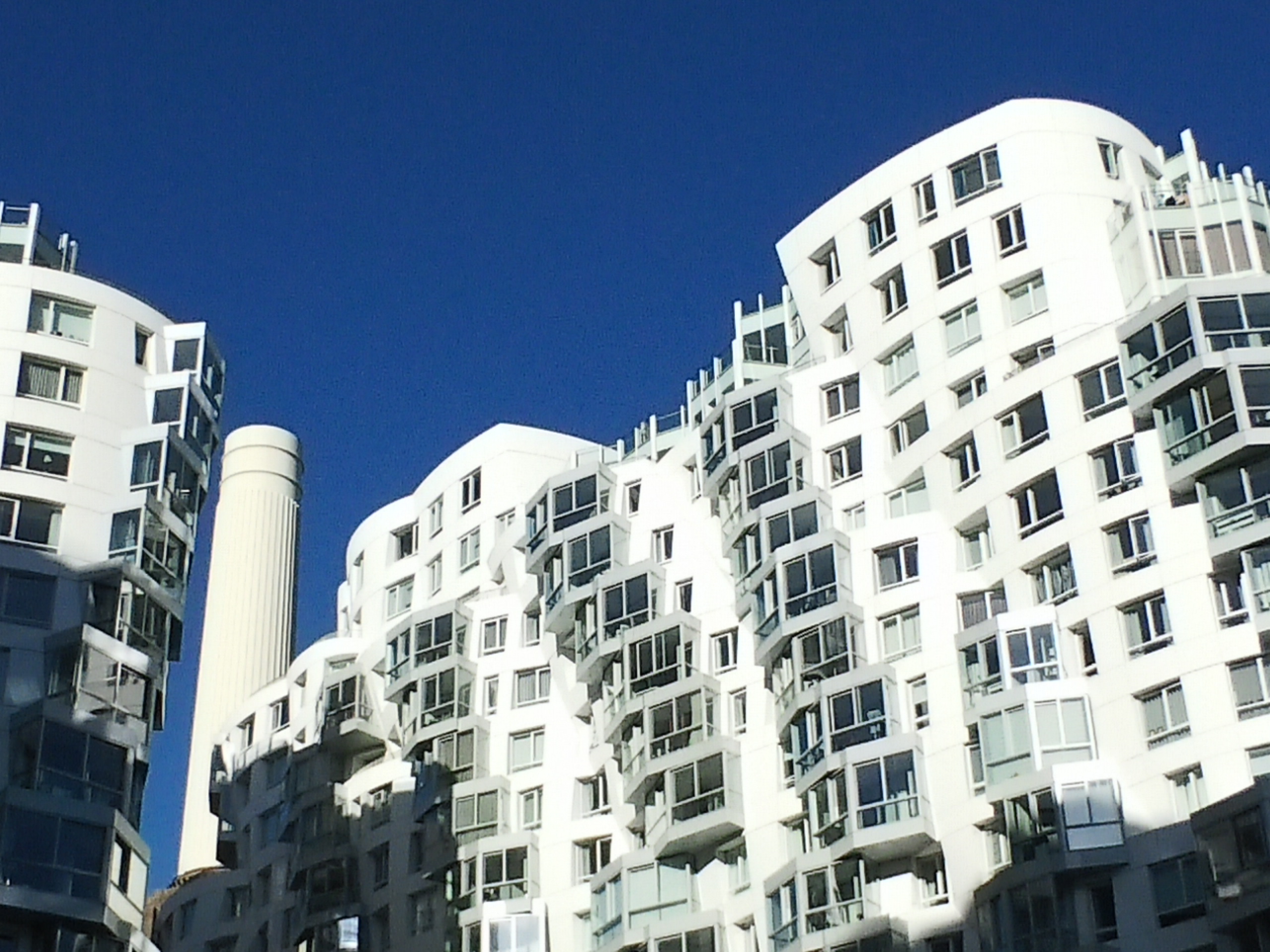
The in-built LED flash works well in low light and indoors, though it’s worth noting that it is most effective at relatively short distances. The Wide Evo lets you set said flash to fire automatically or not.
Now, let’s talk about the two-stage lever that functions as the camera’s shutter in place of a button. How it works is you push the lever down a little to focus and push it down all the way to take a photo.
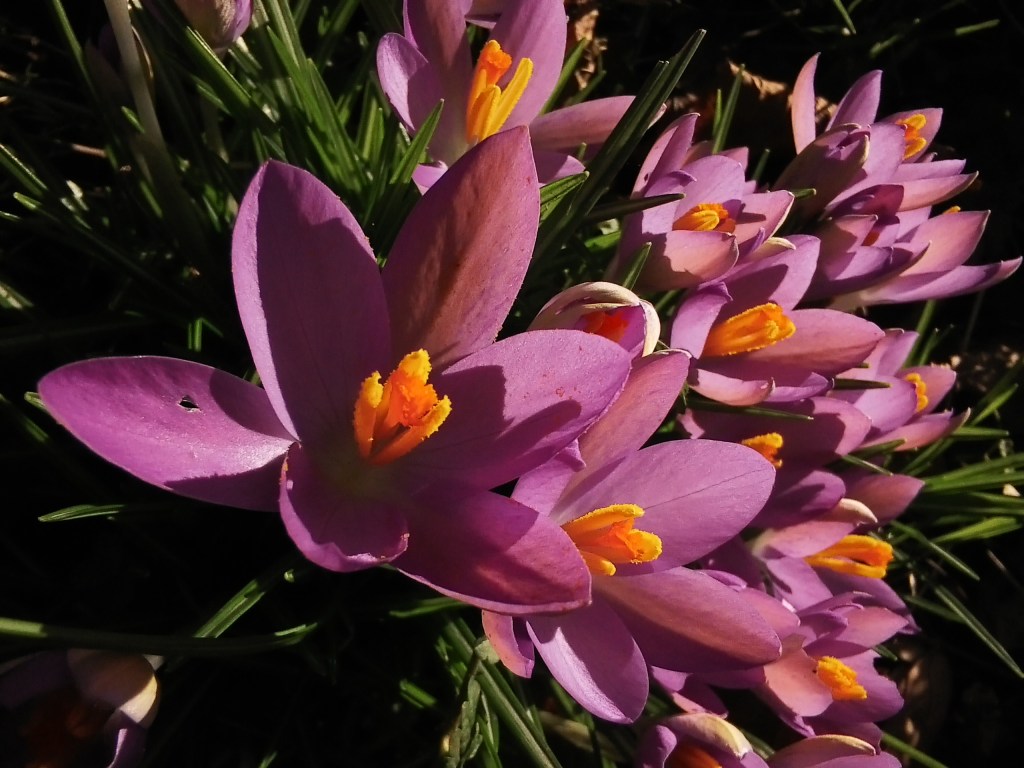
At times it went off when I only meant to half press it down to focus. Other times it did not go off at all. Either way, it’s very annoying. It’s frustrating enough when the camera takes an age to turn on. Then the shutter doesn’t go off. This makes street photography and photographing candid moments, well, extremely difficult.
The camera has a variety of filters. More than the Mini Evo even. But if I bought this camera, as a photographer, I probably wouldn’t use many of the filters, which are still giving early Instagram filter energy. Some, like the double exposure and black and white filters, have grown on me the more I’ve used the Wide Evo. Others, like the light prism, monochrome blur, magenta have not. At least, it’s somewhat of a step-up from the Mini Evo. Progress is progress.
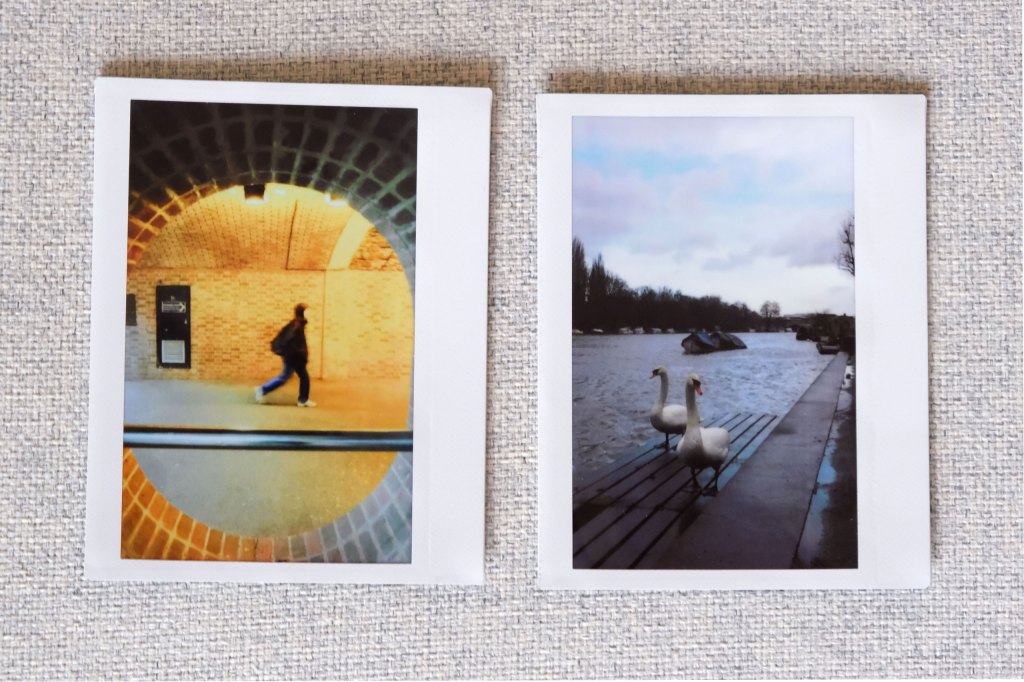
It is disappointing though that the in-built memory, like the Mini Evo’s, isn’t more sizable. Especially considering that it’s a digital camera and you’ll likely be taking more than 50 photos.
Printing
The Wide Evo captures images at 318dpi and my prints were on the whole, very good. They were also vibrant, even when I hadn’t selected the vibrant effect. I wasn’t expecting this, as they did not look that vibrant on screen.
The screen is big, but it’s resolution leaves a lot to be desired. I was at first disappointed with many of my images as they looked dismal when viewed on the rear display. This could be costly for users. If I wasn’t using these photos for my review, I would definitely have deleted them.
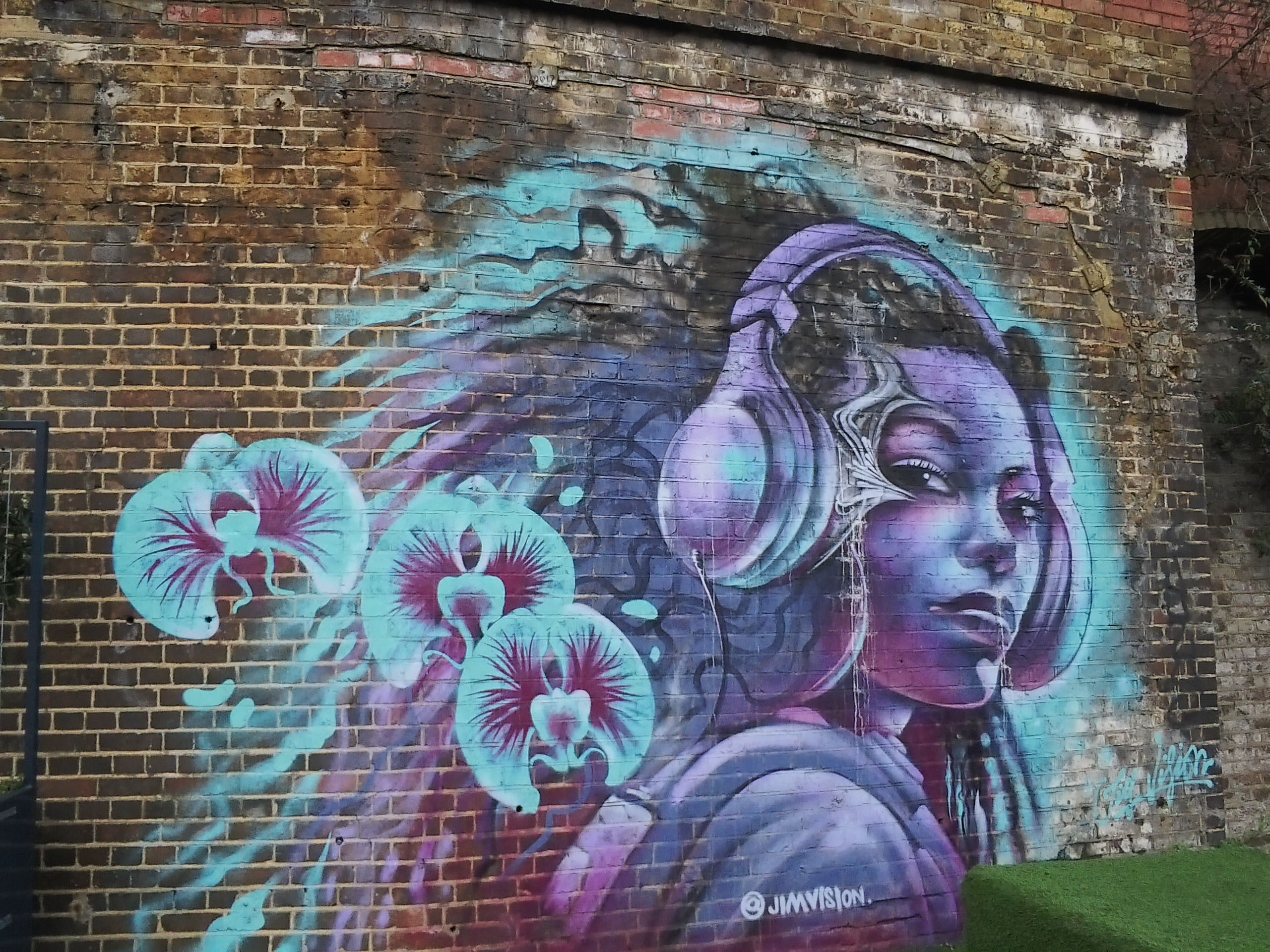
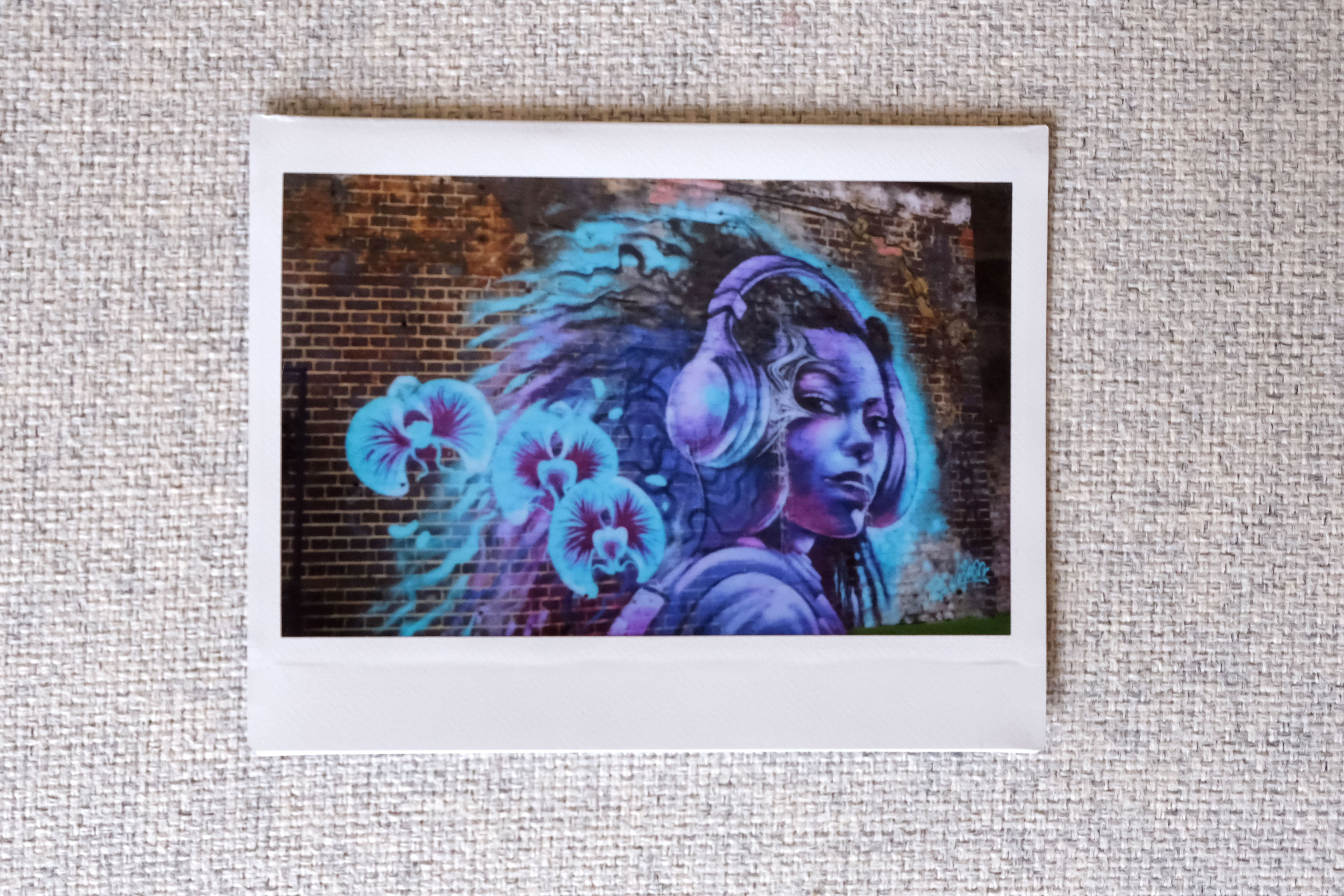
A real plus is that there is a new Instax Wide Evo App which allows you to link your smartphone with your camera to save your prints as images on your smartphone, print photos from your smartphone’s camera roll and do remote shooting.
Additionally, there’s a discover feed on the app. You can post your photos to Instagram using #instaxwideevo for your photo to show up on the feed, where you can also view other people’s photos and settings they’ve used. You can download these settings, then use them to take new photos on your camera. This reminds me of how film simulation recipes are used on Fujifilm’s digital cameras.
Value for money
Much like with the Mini Evo, the ability to choose what to print is very much the headline feature here. While you may spend more on the camera itself, the idea is you spend less on film while still being free to carry on taking pictures. It is likely to appeal to many looking to save on film long-term.
Additionally, the batteries are inside the camera and the only thing you really need to buy other than film when you want to print photos, is a memory card – but that is likely to be a one-off expense and not even a particularly expensive one.
Fujifilm’s Instax printers, like the Mini Link, also have this advantage but the Wide Evo is at least on equal footing here given that it can be used as both a Wide camera and printer.
The Wide format is quickly becoming my favourite format. For most photographers, though, I still think the Mini 99 is the better option. The Wide Evo is also about $150/£140 more expensive than both the Mini 99 and Mini Evo.
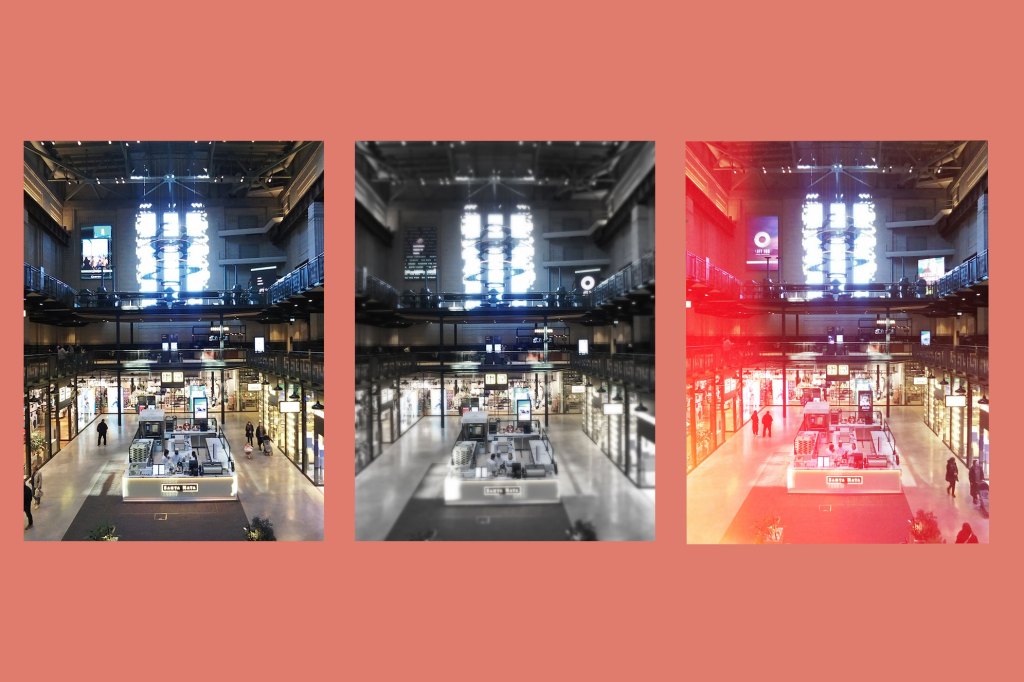
The Mini 99 also has manual exposure, flash control plus red eye reduction mode. What it does have in common with the Wide Evo, is generally of better quality, for example, it’s excellent macro mode.
The digital photos you get from the Wide Evo do look a bit like the photos you’d get from a vintage digicam, which gives an unexpected but unique charm to the camera.
Verdict
I’d say the Wide Evo is the best of both worlds, but the Mini Evo didn’t exactly set the bar very high. Sadly, we will have to wait for a true ‘photographer’s camera’s from Fujifilm’s Instax range. It’s still a step in the right direction though and I’m excited to see what comes next.

Related content:
- Polaroid Go Generation 2 review: the little instant camera that could
- Why the Instax Mini 99 is the best Instax camera – not the Instax Mini Evo
- This summer: shoot film, shush your inner perfectionist
Follow AP on Facebook, Twitter, Instagram, YouTube and TikTok.

